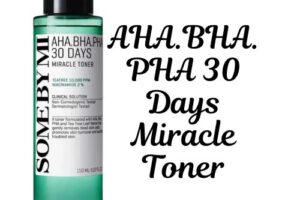How To Know If A Skincare Product Is Safe
Choosing safe skincare products is crucial for maintaining healthy skin and avoiding potential issues like irritation or allergic reactions. With so many products on the market, it’s easy to feel overwhelmed by the sheer number of options and the often confusing ingredient lists.
The importance of picking products that are safe and suitable for your skin cannot be overstated. Using the wrong products can lead to problems such as dryness, breakouts, or more serious skin reactions. Factors like ingredient quality, product formulation, and individual skin sensitivities all play a role in determining whether a product is a good fit for you.
This article aims to provide clear, practical guidance on how to assess the safety of skincare products. We’ll break down key considerations, such as understanding ingredient labels, recognizing potential irritants, and how to choose products based on your unique skin type. By following these tips, you can make informed decisions that keep your skin healthy and glowing, without falling victim to products that might cause more harm than good.
Check Ingredients of Products Used on Skin

Understanding the ingredients in your skincare products is essential for maintaining healthy skin and avoiding potential irritants. Here’s a guide to help you navigate ingredient lists effectively:
How to Read Ingredient Lists
Understanding the INCI Format: Skincare product ingredients are listed according to the International Nomenclature of Cosmetic Ingredients (INCI) system. This standardized format uses scientific names to provide a clear and consistent way to identify ingredients across different products and brands.
Identifying Common Ingredients and Their Functions: Ingredients are listed in descending order of concentration, meaning those at the top are present in the highest amounts. Familiarize yourself with common ingredients and their functions to better understand what’s in your skincare products. For example, moisturizers often include hyaluronic acid, which helps retain moisture, while exfoliants may contain salicylic acid to help clear out pores.
Recognizing Harmful Ingredients and Allergens: Be aware of ingredients that could potentially irritate your skin or cause allergic reactions. Some common harmful ingredients include synthetic dyes, fragrances, and preservatives like parabens. If you have sensitive skin or allergies, it’s especially important to avoid known allergens and irritants.
Look for Ingredient Examples
Safe Ingredient Example – Hyaluronic Acid: Hyaluronic acid is a well-regarded ingredient known for its ability to attract and retain moisture in the skin. It’s gentle, hydrating, and suitable for all skin types, including sensitive skin. Using products with hyaluronic acid can help maintain skin hydration and plumpness.
Potentially Harmful Ingredient Example – Parabens: Parabens are preservatives used to prevent microbial growth in skincare products. However, they have been linked to potential health concerns, such as hormone disruption. As a precaution, many people choose to avoid products containing parabens.
Using Resources for Ingredient Safety Information
Environmental Working Group’s (EWG) Skin Deep Database: For additional guidance on ingredient safety, the EWG’s Skin Deep database is a valuable resource. It provides detailed information on the safety and potential health effects of cosmetic and skincare ingredients. You can search for specific products or ingredients to check their safety ratings and read about any associated risks.
By carefully reviewing ingredient lists and utilizing resources like the EWG database, you can make more informed decisions about the skincare products you use, ensuring they are both effective and safe for your skin.
Verify Certifications

When choosing skincare products, recognizing and understanding certifications can help ensure that you’re selecting safe and ethical products. Here’s a guide to some important certifications and what they signify:
Recognize Important Certifications
Dermatologist Tested: Products with this certification have been tested by dermatologists to assess their safety and effectiveness. While this doesn’t guarantee that the product will work for everyone, it does indicate that it has undergone some level of professional evaluation.
Hypoallergenic: This label suggests that the product is less likely to cause allergic reactions. It’s important to note, however, that “hypoallergenic” doesn’t mean the product is completely allergen-free; it simply means it has been formulated to minimize the risk of causing allergies.
Cruelty-Free: This certification indicates that the product and its ingredients were not tested on animals. Organizations like the Leaping Bunny and PETA provide cruelty-free certification to brands that adhere to ethical testing practices.
USDA Organic: Products with this seal have been certified by the United States Department of Agriculture (USDA) as meeting specific organic standards. This means the ingredients are grown without synthetic pesticides, fertilizers, or genetically modified organisms (GMOs).
COSMOS: The COSMOS (COSMetic Organic and Natural Standard) certification is an international standard for organic and natural cosmetics. It ensures that products meet high standards for organic and natural content, as well as sustainable practices.
How Certifications Ensure Safety
Explanation of Certification Processes:
- Dermatologist Tested: This involves clinical testing and evaluation by dermatologists to check for skin irritation, sensitivity, and overall safety. However, it’s essential to understand that this testing is usually done on a small sample size, so it may not reflect how the product will perform for everyone.
- Hypoallergenic: Products labeled as hypoallergenic are formulated to avoid common allergens and irritants. The formulation process typically involves selecting ingredients less likely to provoke allergic reactions based on known allergenic properties.
- Cruelty-Free: Cruelty-free certification is granted after a thorough review of a brand’s testing practices. Certified brands must prove that they do not conduct or commission animal testing at any stage of product development.
- USDA Organic: To earn USDA Organic certification, products must contain a minimum percentage of organic ingredients, and their production processes must adhere to strict organic farming standards. The certification ensures that the product is free from synthetic chemicals and GMOs.
- COSMOS: Products with COSMOS certification are scrutinized for their organic and natural content, sustainability, and adherence to ethical standards. The certification process includes audits of ingredient sourcing, production methods, and overall environmental impact.
Research Reviews and Ratings

When choosing skincare products, researching reviews and ratings can provide valuable insights into their safety and effectiveness. Here’s how to navigate and evaluate reviews effectively:
Where to Find Reviews
Checking Reputable Review Sites:
- Beautypedia: Founded by Paula Begoun, Beautypedia offers expert reviews and detailed evaluations of skincare and cosmetic products. The site assesses products based on ingredient analysis and effectiveness, providing a professional perspective.
- SkinCeuticals: While primarily a brand-specific site, SkinCeuticals also features customer reviews and testimonials about their products. Their reviews can offer insights into real-world experiences with their skincare lines.
Reading User Reviews on Retailer Websites and Forums:
- Retailer Websites: Major retailers like Sephora, Ulta, and Amazon often have extensive customer reviews. These reviews can help gauge how well a product performs in everyday use.
- Forums: Skincare forums and communities, such as Reddit’s SkincareAddiction, provide user-generated reviews and discussions. These forums can be useful for finding detailed experiences and tips from fellow skincare enthusiasts.
How to Evaluate Reviews
Looking for Patterns in Feedback:
- Safety and Efficacy: Pay attention to recurring comments about the product’s safety and effectiveness. If multiple reviews mention issues like irritation, breakouts, or lack of results, it may indicate potential concerns.
- Common Concerns: Note any frequently mentioned pros or cons. Patterns in feedback can reveal important information about how the product performs across a range of users.
Considering the Credibility of the Reviewer:
- Reviewer Background: Evaluate the credibility of the reviewers. Reviews from individuals with similar skin types or concerns to yours are often more relevant. Look for detailed reviews that describe personal experiences and how the product performed over time.
- Number of Reviews: A product with a high number of reviews can provide a more reliable overview of its performance. Be cautious of products with very few reviews or those with a mix of extremely positive and negative feedback.
Follow Trustworthy Sources

When it comes to skincare, relying on trustworthy sources for information ensures you make informed choices about the products you use. Here’s how to identify and use reliable sources:
Identify Reliable Information Sources
Recognizing Reputable Dermatologists, Skincare Experts, and Health Organizations:
- Dermatologists: Established dermatologists with credentials and a history of clinical practice are valuable sources of accurate skincare advice. Look for experts affiliated with recognized institutions or those who contribute to reputable publications.
- Skincare Experts: Professionals with extensive experience in dermatology or cosmetic science often provide insights based on their expertise. Experts who regularly publish research or provide clinical guidance can offer reliable information.
- Health Organizations: Reputable health organizations like the American Academy of Dermatology (AAD) and the British Journal of Dermatology are excellent sources for evidence-based skincare information. These organizations provide guidelines, research, and reviews on various skincare topics.
Following Professional Reviews:
- American Academy of Dermatology (AAD): The AAD offers expert advice on skincare and dermatological conditions. Their website includes resources and articles written by dermatologists on various skincare issues.
- British Journal of Dermatology: This peer-reviewed journal publishes research and reviews related to dermatology. It’s a valuable source for the latest studies and evidence-based recommendations.
How to Cross-Check Information
Avoiding Misinformation and Biased Opinions:
- Check for Bias: Be cautious of sources that have a commercial interest or are sponsored by skincare brands, as their reviews may be biased. Aim for independent reviews and expert opinions that are not influenced by marketing.
- Avoid Unverified Claims: Steer clear of information that lacks scientific backing or is presented without evidence. Rely on sources that provide detailed explanations, research findings, or clinical data to support their recommendations.














2 comments